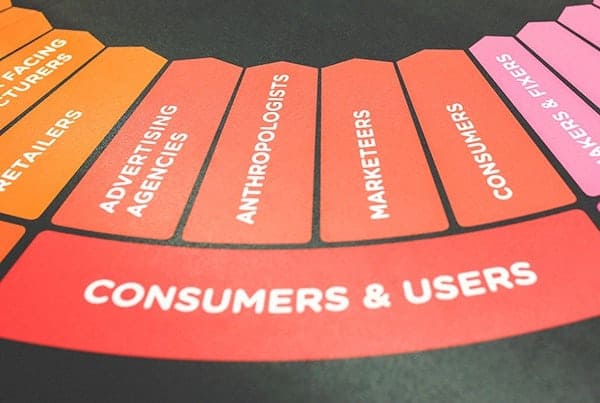
Is Your Business Blog Hot… Or Not?
Posted on 14th January 2019 by Phil Ainley
Companies, business owners and freelance professionals who write a regular blog can reap a range of benefits… if it’s done properly. That means writing and posting quality content.
Read on to find out more about how you can make the most from your blog and improve your business in the process.
Quantity and quality in harmony
You don’t have to think too far back to the days when a 500-word blog article was the norm and if you posted an article that was 800 words long you were a content superstar.
Recent research has shown that long-form content reigns supreme, but that is only the case if your article contains quality content, if it’s filled with fluff it still won’t get you noticed and it certainly won’t get any shares or garner any newsletter sign-ups.
Backlinko released their own research, which was presented by marketing expert, Neil Patel in a really insightful article on the topic, that found the average word count of a Google Page1 result was 1,890 words.
Phew! That’s a lot of writing and a lot of researching of the subject matter prior to typing your first word.

In terms of your industry, how much quantity should you be aiming for?
Here are a few industries and the recommended depth you should be aiming for based on the research.
- Fintech 2,000 to 2,150 words
- Finance 2,100 to 2,500 words
- Manufacturing 1,700 to 1,900 words
- Sales 2,500 to 2,700 words
- Retail 1,500 to 1,700 words
- Property 1,800 to 1,900 words
- Home & Garden 1,100 to 1,200 words
- Technology 800 to 1,000 words
- Gadgets 300 to 500 words
- Marketing 2,500 to 3,000 words
- Healthcare 2,000 – 2,150 words
- Fashion 800 – 950 words
- Recruiting 900 – 1,000 words
- Food 1,400 – 1,900 words
- Travel 1,500 – 1,850 words
- Film 1,500 – 1,700 words
Bear in mind that these figures are not true for all countries and cultures, but they do give a good idea of what it takes to get your blogs noticed in Google.
Now that you are fully aware of what it might take to get your blog noticed (we hope we haven’t scared you) we can highlight some key points that you will need to bear in mind to create a great blog.
Understand your blog is a valuable marketing tool
Your blog should be written by someone who understands its power as a marketing tool for your business. The writer needs to know what mistakes to avoid and what vital components are needed to make it a success.
Your blog is not simply reliant on great quality content. It requires keyword research, analytical understanding, understanding of the target audience and their pain points, a compelling point related to each target audience and a clear call to action to round it off.
Many blogs are written in haste and without clear research and understanding of who they are for and are posted without a way of the reader contacting the company for further information. This is an opportunity missed to engage with your audience and compel them to contact you and potentially sell a product or service to them.
It is important to bear in mind that blog content marketing is not a throw-away task. It is ‘marketing’ and as such it should be measured for its success.
In Google Analytics you can see how many people are viewing your articles, what page rank each article holds in your website, and which topics are the most popular.
The most popular topics are those you should write more of to take advantage of this trend and further increase your website traffic.

Know your audience
Very few businesses have only one target market segment, yet very often multiple segments are combined into one ie: Car Drivers.
If you are a car dealership or car accessories retailer, a segment such as Car Drivers is too broad, which will mean any blogs written for this segment could lack detail and not resonate strongly with the audience.
Segmenting this market further will help focus your blog content on specific issues relevant to that segment ie: Car drivers who are aged between 25 and 45 who regularly carry family passengers and who holiday in the UK and who have 5 or more year no claims bonus.
Straight away you can think of blog ideas that will be relevant to that segment such as ‘The ideal luggage carrier for your UK holiday’, or ‘How to keep your car insurance premiums low without compromising on your insurance’, or even ‘5 perfect UK destinations for your next caravanning holiday’.
Under each of these titles will be multiple opportunities to mention products relevant to the article that are specific to this market segment.
So, before you start to type your next article, think about your markets and plan exactly what you are going to write about and why it matters to your audience.
Publishing poor content
Poor quality content is not defined simply by a lack of relevance for the reader. Whatever you write about you should aim for the reader to come away from the article with a sense of fulfillment and satisfaction that they have benefitted from reading your content.
Well-written and interesting content, that is relevant to the reader, will help with this. To many industries hot topics such as BREXIT or taxation reforms are commonly written about.
Be careful not to churn-out the same content as everyone else in your market-space, it’s difficult to do, but worth thinking about. Look for a new angle or form your own informed opinion on a subject to help your content stand above the noise of your competitors.
Your content subject matter might be great, but if your writing is poor then that too will damage the effectiveness of your blog.
Poor grammar, spelling and punctuation is common in blogs and is an immediate put-off to most readers. Waffle is another no-no for blogs. Taking too long to get your message across or just waffling for the sake of hitting a word count target won’t cut it with your readers and your article will probably bore them into leaving your website.
Above all, before you publish your articles ask someone to proof read them for you.

It’s important to stand out from from your competitors
Standing above the noise of your competitors
A common practice with content marketers is to repurpose old content. This is a good thing to do if your old content was of high quality. You can easily take a previous article and update it to fall into line with new legislation or recent opinion.
Remember to look at your Google Analytics to see how your previous articles performed. If it was a popular article it will likely be popular again, if not you may be better off rewriting the article from scratch with a new purpose and a new audience in mind.
Compel your readers to contact you
Harking back to our previous point about your blog being a marketing tool, it is vital you include a call to action (CTA) in your article.
If you article has a goal (and it should) then including a CTA at the end of your article will help compel the reader to get in touch. Your CTA could be your phone number, an email address or a form/comments section.
If you rely on your contact page or your website header as your only points where your contact details are shown you are making the process inconvenient for your readers and they will simply leave your website without comment or contact.

Posting your blog article live to your website is only the start, you’ve got to make it easy for potential readers to find it too.
Tell everyone about your business blog
You’ve researched and planned your article. The first, second, and third drafts and have been written and you’ve had the final article proof read and signed-off for publication.
Your blog article has been posted, including tagged and labelled images relevant to the topic and it is now live for everyone to read. Now tell everyone where they can find it!
So often, blog posts are published to websites and are not promoted in any other way, because of this they get very few readers.
Social media is an ideal way of promoting your hard work to your target audience and by using a scheduling platform such as Sprout Social or Hootsuite you can promote your article as many times as you like across multiple channels.
You should also include your quality content in your email marketing to your relevant list.

What if I’m stuck?
Writing is a skill that is honed with practice. Not everyone is blessed with the skills to write a great article, even some marketers struggle with this aspect of their role.
It is also common to find business blogs being written by non-marketers, usually employees from different departments within a business.
This can be great for expert knowledge of a specific product or service, but if the day-to-day demands of that person’s role become too much, the blog writing gets pushed to one side resulting in shortened articles that are publish irregularly.
If you are stuck, get help from a professional.
Freelance Copywriters provide a fantastic service to many businesses who are struggling for ideas and for time to write their articles.
Copywriters are specialists at content writing and can usually help advise how you can promote your articles to create new potential audiences.
We hope our article helps you to create a fantastic blog for your business.
Caunce O’Hara are experts for business insurance for companies of all sizes from start-ups and freelancers to SMEs and large corporate market-leaders. If you would like a no obligation business insurance quotation, please contact our friendly award-winning team on 0333 321 1403
Related Articles:
Key reasons why it is important for freelancers and the self-employed to be active networkers


